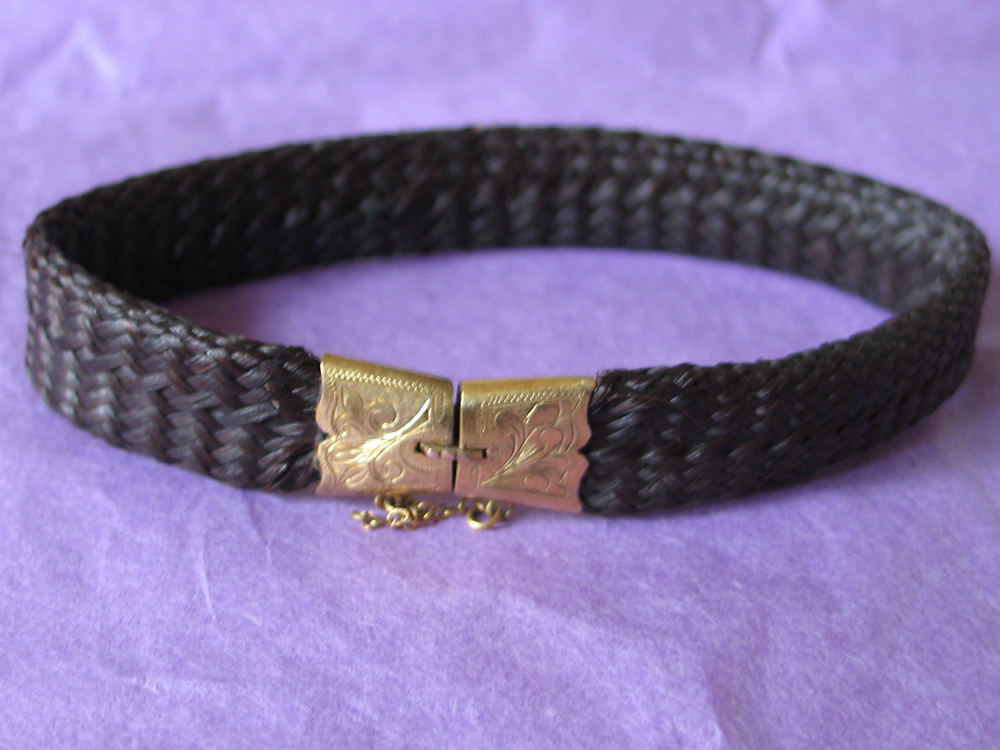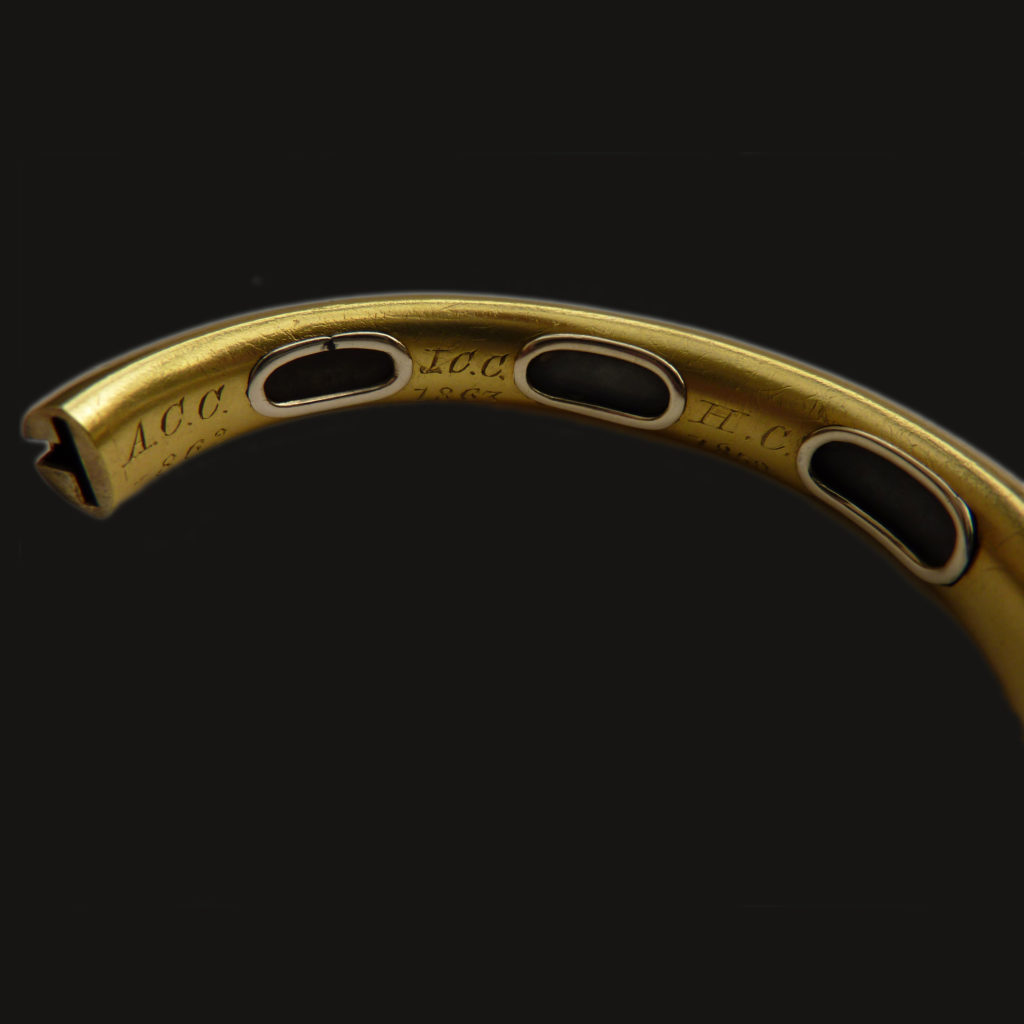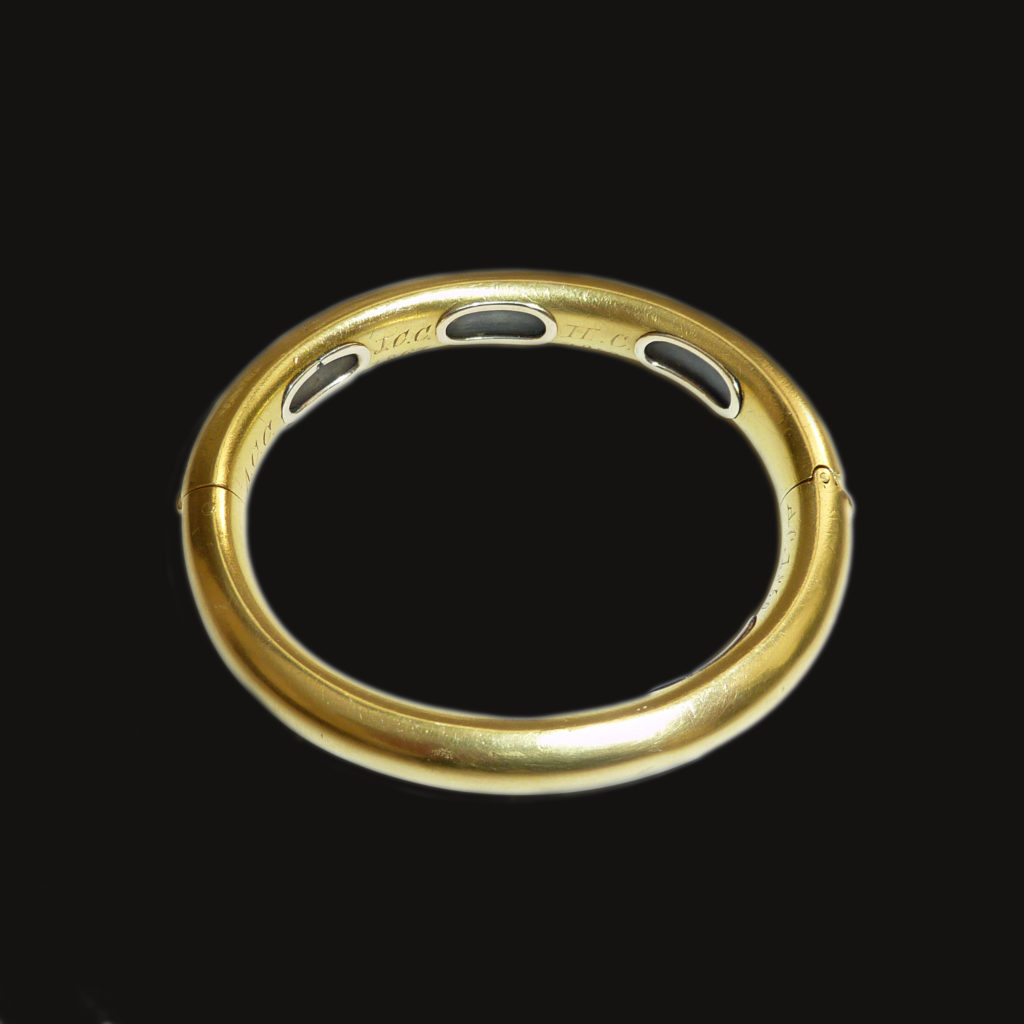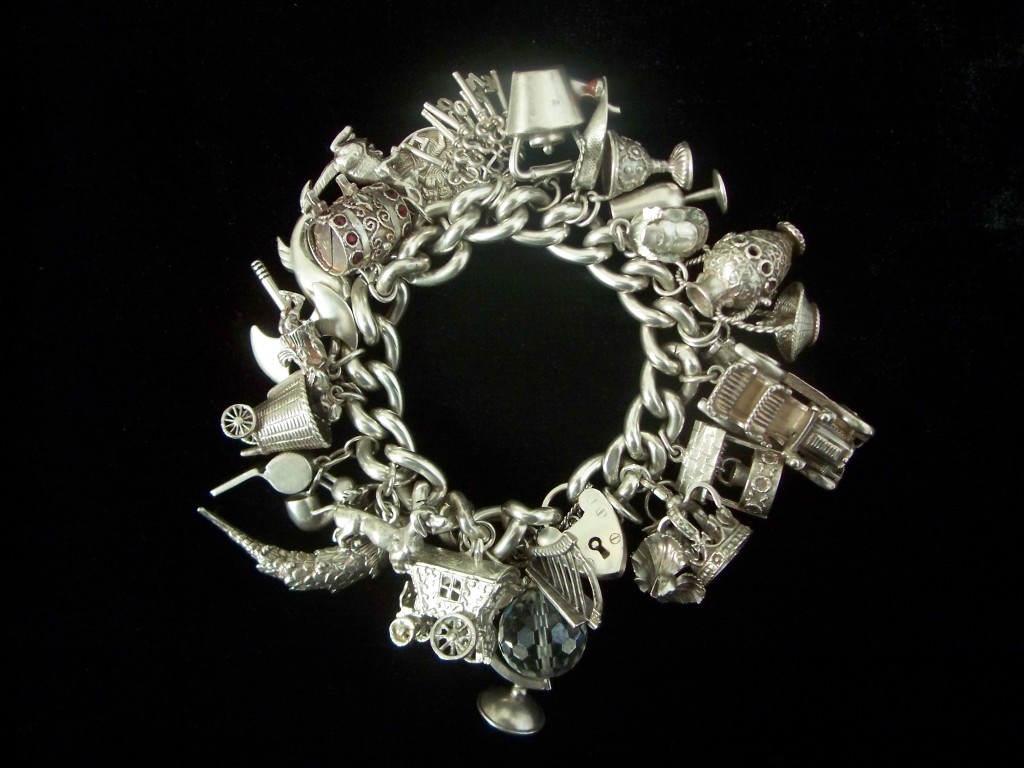A Simple Hairwork Bracelet

Lower grade alloys were allowed in jewellery construction post the 1854 Hallmarking Act, and this opened up the accessibility of jewellery to a new strata of audience. Though there were materials which could be used to construct jewellery and be worn as adornments of beauty, now gold could be mimicked through inexpensive means.
Many of the mourning and sentimental jewels of the late Victorian period utilise these materials, with the most popular alloy being Pinchbeck, an alloy of copper and zinc. Here, heavy clasps and fittings could be large and worn at the neck or wrist to accommodate the large, fashionable crinolines of the time. With bracelets like the above, the benefits of being low cost and highly produced gave the sentimental industry a way to keep in popular fashion. Hair was relatively inexpensive and fittings were mass produced, leading to a high level of customisation and individualisation, keeping the sentiment and fashion statement dear to the wearer.
From a cultural point of view, this makes dating the jewels more difficult, rather than being as specific as older jewels. The fittings could be produced and shipped globally, taking the actual production away from the specialised jeweller, and the hair was more often than not colour-matched, so without the benefit of a signed dedication, we can generalise that the colour of the hair would narrow it down to being from the north or the south of Europe, and the clasp or fitting within a bracket period of ten to twenty years due to size.






